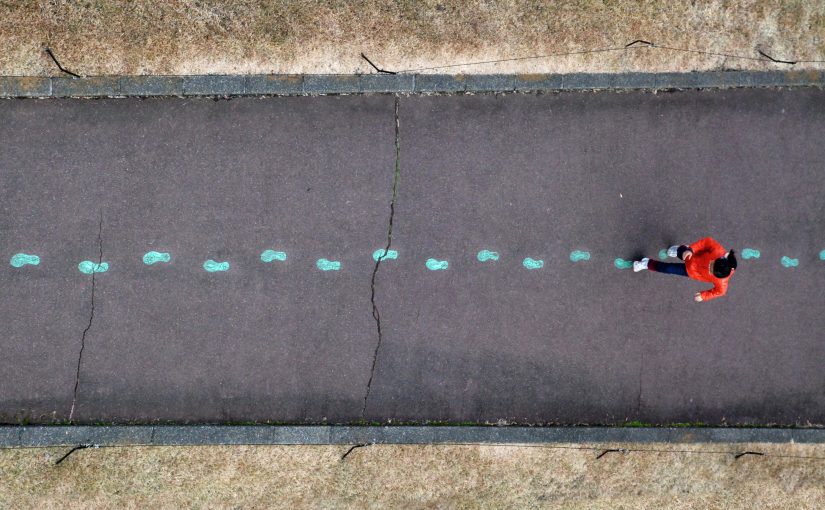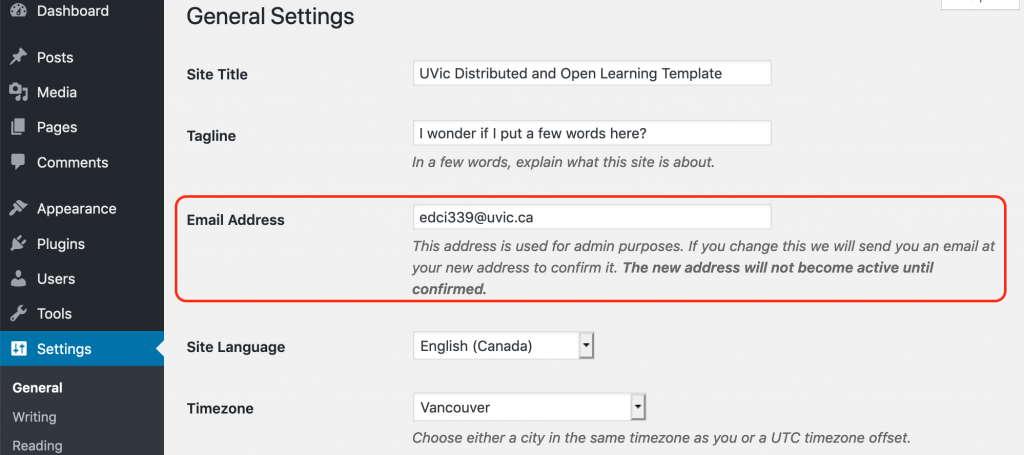Final Review Paper
In my favorite season of the year, as we all are working towards the end of this semester and we are going to sum up the valuable knowledge that I have learned throughout this delightful course. Today, I will be reviewing an online course of Interactive Multimedia Learning that I took this semester at UVic as my topic of the final paper by using the SECTIONS model ( link attached) and academic researches to support with. Hopefully, after reading this review paper will make you have a better understanding of the course and why I liked it.
First off, I want to start with the reason why I have chosen this particular course as my topic to talk about. There are a few reason that I found this course useful and I want to take this opportunity to let more people get to know, such as: master the use of different educational applications. Thanks to the modern development of technologies that many applications we can use today which means you can teach and learn from different perspectives rather than just stick in the old traditional method of education. I also want to start with a video to tell my audience why online courses are getting more important and how we can get benefits out of it:
Students are always the center of the education, have a better understanding of the students will help the instructors to teach the things that matches students’ needs. Which is the how I found my interests in the course Tony et al.(2019) mentioned in their research of SECTIONS model: “Graduating students that have been interviewed about learning technologies at the University of British Columbia made it clear that they will be happy to use technology for learning so long as it contributes to their success”. That states that student are really going to use what they learned that is helpful in their future career. Taking an example that I learned from the interactive multimedia learning: Screen-casting was something that I have never used before but in one chapter of the whole course was talking about how to use screen cast from scratch and I ended up using it in some other courses for presenting my ideas. Here is what I have done for the screen-casting challenge in the course on teach my audience how to crate a website :
I personally found it was very useful and I am glad that I obtained another skill that may be extremely useful in my future career.
Next, I want to talk about the level of ease of use in this course. In this course, you will find a lot of free materials that can be easily access to. As Tony et al. (2019) stated: “ease of use requires professionally designed commercial or open source course software, specialized help in graphics, navigation and screen design for your course materials, and strong technical support for server and software management and maintenance.” There is already materials and instructions were prepared by the instructors that makes me with no effort every time when I want to get access to the related knowledge or some recommended materials.
Furthermore, the design for the course is a successful example for the online courses. The design of online courses require a lot of professional knowledge on how to design the structure of the course, the appropriate content and the most effective method to implement the ideas into the course. Stavredes and Herder (2014) clearly stated in their book named A Guide to Online Course Design : Strategies for Student Success: “Learning with understanding focuses on the idea of learning “usable knowledge” in a network of meaning organized by important concepts. This idea is based on research about how experts organize their knowledge and how learners should be able to understand and use the knowledge they learn in different contexts rather than remember large bodies of disconnected facts. This includes understanding the facts, why they are important, relationships to other facts and knowledge, and when to use them.” That reveals the science of designing an online educational course is not as simple as it seems. In the course, we learned and there are a lot of concepts involve in designing multimedia teaching. There are many principles we could fellow that can be implemented in the educational multimedia. For an instance, according to Pelton and Francis-Pelton (2017) in their work of “An Overview of Educational Multimedia Principles.”,there is one called “Keep it simple” principle, which means to keep the educational multimedia short and precise, you do not need to tell the audience the whole story about it, but you also have to make sure that you deliver the idea to the audience. Another useful principle is called “Segmenting principle”, which means the designer also does not have to show or tell the whole thing at once. By breaking down the whole thing into small pieces to make sure that audience could a hundred percent understand what the designer want audience to learn. Also, there are many more helpful principles you could use that will serve your purpose very well. (The file of educational multimedia principles will be attached: R1-educational-multimedia-principles)
Move over, the interaction between material and students is quite important in the approach of online educational courses. There are three ways of interactions in terms of educations. They are student – learning material, student – instructor and student – student. For the online courses, the interaction of student – Once again, because of the development of modern technologies that makes us to learn easier and quicker. That is also the reason why online educational multimedia become more popular over the days. Students could use a kind of medium such as computer to interact with the learning material. As Tony et al. (2019) stated in the article: “Computer technology can greatly facilitate learners’ interaction with learning resources. Self-administered online tests can provide feedback to students on their comprehension or coverage of a subject area. Such tests can also provide feedback to teachers on topic areas where students are having difficulty, and can also be used for grading of students on their comprehension.” One advantage of that is as mentioned in the text, feedback is important for teachers to evaluating the material and improve the work. Here is also a clip of how to use computer to make everything easier:
https://www.youtube.com/watch?v=OHSI9eZ0_nA
Move on to that, another advantage that online multimedia education has is cost-efficient. Unlike the traditional method of education, nowadays educations can be done through very effective and relatively cheap ways. There are some essential cost that designers cannot avoid: production cost, your time as an instructor, copyright clearance and cost as an instructional designer. These are the fixed costs or the once cost that means most cost would not appear a second time. Also, there are some variable costs but they are still manageable. Besides that, the more money you invest in the material, the better the outcome is as in the article of Tony et al.( 2019): “There may be benefits then for a teacher or for an institution in spending more money up front for interactive learning materials if this leads to less demand for teacher-student interaction.” As we can observe that interactive learning materials can make education easier than in the interaction of students to teachers. Moreover, they also give an example of it: “For instance, a mathematics course might be able to use automated testing and feedback and simulations and diagrams, and pre-designed answers to frequently asked questions, with less or even no time spent on individual assignment marking or communication with the teacher. In this case it may be possible to manage teacher-student ratios as high as 1:200 or more, without significant loss of quality.” No time will be spent on marking the papers at all, which makes the education more efficient and effective.
To wrap up, we have reviewed and analyzed my experience of online course and I also want to say that I had a great experience of this online course but most importantly is that I also enjoyed the course of EDCI 339 that gives me the opportunity to extend my knowledge about distributed and open learning. That allows me to have a better overall understanding of this world of learning from many perspectives. Last but not least, I am truly grateful for what Dr. Michael Paskevicius has done for us during this tough time. I am thankful for reading my final review paper and I wish everyone stays healthy and safe in this pandemic time, hope we will get after it very soon.
Reference
A.w., Tony, & Bates. (2019, October 10). Chapter 9: Choosing and using media in education: the SECTIONS model. Retrieved from https://pressbooks.bccampus.ca/teachinginadigitalagev2/part/9-pedagogical-differences-between-media/
Stavredes, T., & Herder, T. (2014). A guide to online course design: strategies for student success. Hoboken: John Wiley & Sons.
Pelton, T. & Francis-Pelton, L. (2017). Multimedia, Design, and Storytelling Principles Supporting the Creation of
Learning Resources. In P. Resta & S. Smith (Eds.), Proceedings of Society for Information Technology & Teacher
Education International Conference 2017 (pp. 900-905). Chesapeake, VA: Association for the Advancement of
Computing in Education (AACE).


